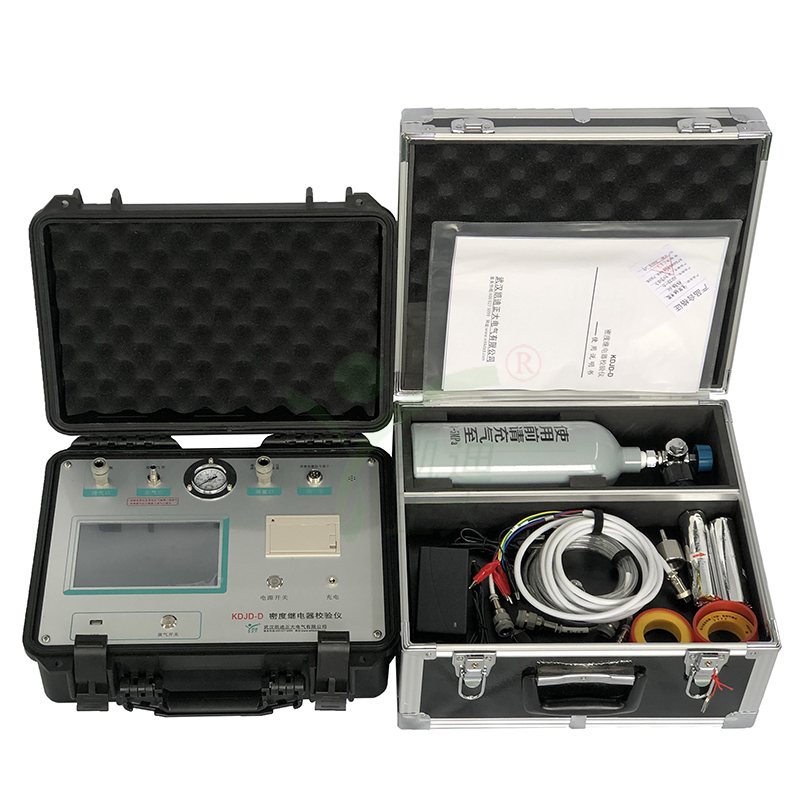
08 Oct-2024
SF6 (sulfur hexafluoride) is a gas widely used in the power industry, primarily in gas-insulated electrical equipment (GIS). Because of its excellent insulation performance and arc extinguishing characteristics, SF6 has been widely used in high voltage and ultra-high voltage electrical equipment. However, SF6 gas has an extremely serious impact on the environment, with a global warming potential (GWP) 23,500 times that of carbon dioxide. Therefore, timely detection and repair of SF6 leaks is critical. This article will introduce 15 methods for detecting SF6 gas leakage.
1. SF6 gas infrared spectroscopy
Infrared spectroscopy is a highly sensitive gas detection technology, which uses SF6 molecules to detect the absorption characteristics of infrared light. The method can detect the leakage at a long distance and is suitable for the monitoring of large electrical equipment.
2. SF6 gas detector
Portable gas detectors are commonly used to detect SF6 leaks. These devices are often equipped with sensors that can monitor gas concentrations in real time and issue alerts. The flexibility of the gas detector makes it suitable for field inspection.
3.SF6 gas sampling method
The gas sampling method guides the gas sample to the analytical instrument for testing by setting up sampling pipes around the equipment. This method is suitable for detailed analysis of specific areas.
4. SF6 gas acoustic detection method
Acoustic detection method uses the propagation characteristics of sound waves in gas to detect acoustic signals generated by gas leaks. This method can be used in complex environment without interference from other gases.
5. SF6 gas thermal imaging technology
Thermal imaging technology identifies leaks by detecting temperature changes on the surface of equipment. Leakage of SF6 gas can cause abnormal changes in the surface temperature of the device, which can be detected by a thermal imager.
6. SF6 gas ultrasonic detection method
Ultrasonic detection method uses high-frequency acoustic signals captured by ultrasonic detectors to identify gas leaks. This method is especially suitable for the monitoring of high voltage equipment and can work effectively in noisy environment.
7. SF6 gas chemical analysis
Chemical analysis The concentration of SF6 is determined by chemical analysis of gas samples. This method usually requires laboratory equipment and is suitable for more accurate measurements. 8. SF6 gas electronic nose technology
Electronic nose technology uses an array of sensors to simulate the human sense of smell and is able to identify the composition and concentration of gases. Although it is in the research and development stage, its potential is huge.
9. SF6 gas visual detection method
Visual detection helps inspectors observe visible signs of gas leaks by using specialized visualization tools. This approach is often used in conjunction with other techniques.
10. SF6 gas leak simulation
Gas leakage simulation is performed by introducing a known concentration of SF6 gas into the device and observing its diffusion and leakage behavior. This method can help evaluate the tightness of the equipment.
11. SF6 gas fiber sensing technology
Optical fiber sensing technology uses optical fiber sensors to monitor temperature and pressure changes in equipment, thereby identifying gas leaks. This method has the advantages of high sensitivity and real-time monitoring.
12. SF6 gas laser detection technology
The laser detection technology detects the presence of SF6 gas by irradiating the gas with a laser beam and analyzing the characteristics of the reflected light. This method has the ability of high precision and long distance detection.
13. Portable infrared SF6 gas imager
A portable infrared imager is an efficient inspection tool that can quickly scan equipment surfaces to identify potential leaks. The equipment is easy to operate and suitable for field use.
14. Computational Fluid Dynamics (CFD) SF6 Gas simulation CFD simulation simulates gas flow through computer models to help predict the likelihood and impact of leaks. This method is suitable for equipment evaluation in complex environment.
15. Field test SF6 gas
Field testing is done by manually checking and testing the tightness of the equipment to identify potential leak points. This method, while time-consuming, is essential in some cases.
The detection of SF6 gas leakage is an important link to ensure the safety of electrical equipment and environmental protection. Through the above 15 detection methods, the leakage problem can be effectively identified and repaired to ensure the normal operation of the equipment and the safety of the environment. With the development of technology, these detection methods will be continuously improved to provide strong support for the sustainable development of the power industry.

